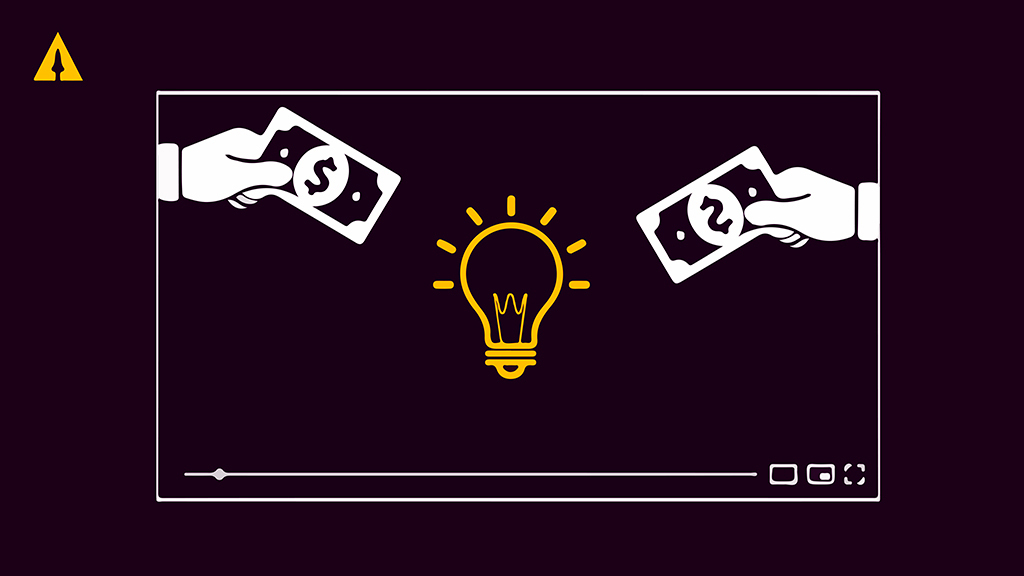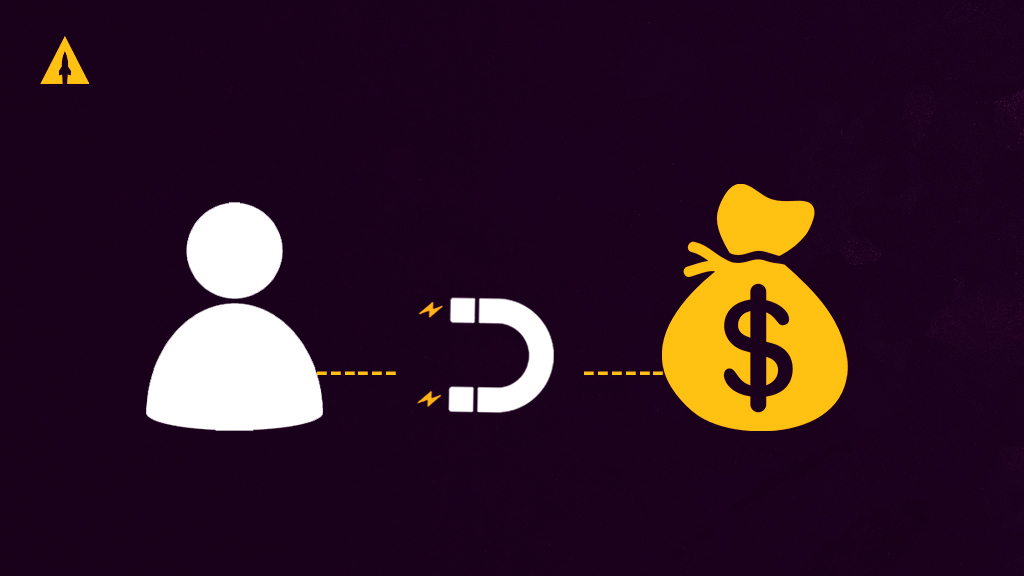
LaunchBoom began in 2015 with the mission to build the most effective product launch system. Our business model was different than it is today. If we decided to work together then, that meant our team and your team were committing to working together for at least the next 6 months. This required a big investment of time and money from both parties, which means a great deal of risk.
We saw a lot of success with our initial clients. But then we began to see a campaign or two struggle early on. Issues such as…
- Building the pre-launch email list was much more expensive than we thought
- Realizing that the original positioning of the product wasn’t solving a big enough need
- Beating our head against a wall trying to make it work
Then we would launch and surprise, surprise… it didn’t work.
Having a few experiences like this as a company really forced our team to ask some difficult questions. The most important question of all: how can we know if a campaign is going to be successful before we launch on Indiegogo and Kickstarter?
The answer: we test it.
Instead of having clients make a huge investment of time and money into their product launch, we thought… why don’t we drastically reduce risk by testing the product in the market before we launch to ensure viability?
Furthermore, everyday we hear the same questions:
- How do I raise $1,000,000 on Indiegogo or Kickstarter?
- How much do I have to spend on advertising?
- What will be my return on investment?
Whoever is answering these questions without testing your product first is lying to you.
Sure, someone can use their intuition and past experience to give you their opinion, but that opinion isn’t using any data that’s directly tied to your product. To answer those questions more accurately, you must spend time and money on advertising to test product positioning and audience targeting.
We’ve developed a systematic way to do this that requires very little upfront investment yet produces powerful insights. We call it TestBoom.
Contents
How the TestBoom process works
What separates the products that take off on crowdfunding and those that do not? Large advertising budget? Viral video? Praying you get picked up on Mashable?
Sure, those things can make a difference, but they are not the most important difference.
In the end, the campaigns that do the best are the ones that nail their product positioning. Simply put, great product positioning is communicating the problem you solve to the right people.
This sounds easy, but is extremely hard.
That’s why it’s the part of the process where we spend the most time. You can think of the product positioning as the foundation for the rest of the campaign. Start with poor positioning and the whole thing will come crashing down once you launch.
How to figure out the best product positioning
Step 1: Fill out the CBBE Questionnaire
We want to start by getting all your ideas about your product and brand out onto paper. To do this, we use a framework called the Consumer Based Brand Equity (CBBE) pyramid. I’ve found this to be lean enough that it doesn’t take up too much time to complete, yet powerful enough to have a profound impact on your campaign.
Download the questionnaire here.
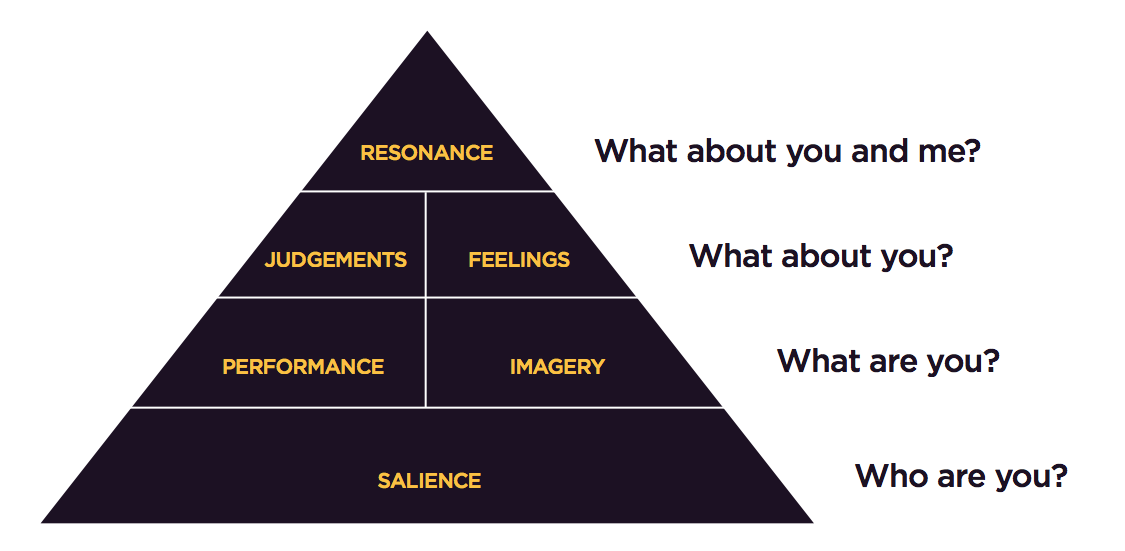
Step 2: Identify 2–4 angles you want to test
With all your thoughts now organized in the questionnaire, we want to come up with 2 to 4 angles to test in the market. There are many ways to communicate the value of a product. An angle can be thought of as one of those points of value that we want to lead with.
Let’s look at our client VAVA 4K Laser Projector that went through our TestBoom program first, then launched on Indiegogo and raised $1,759,451.
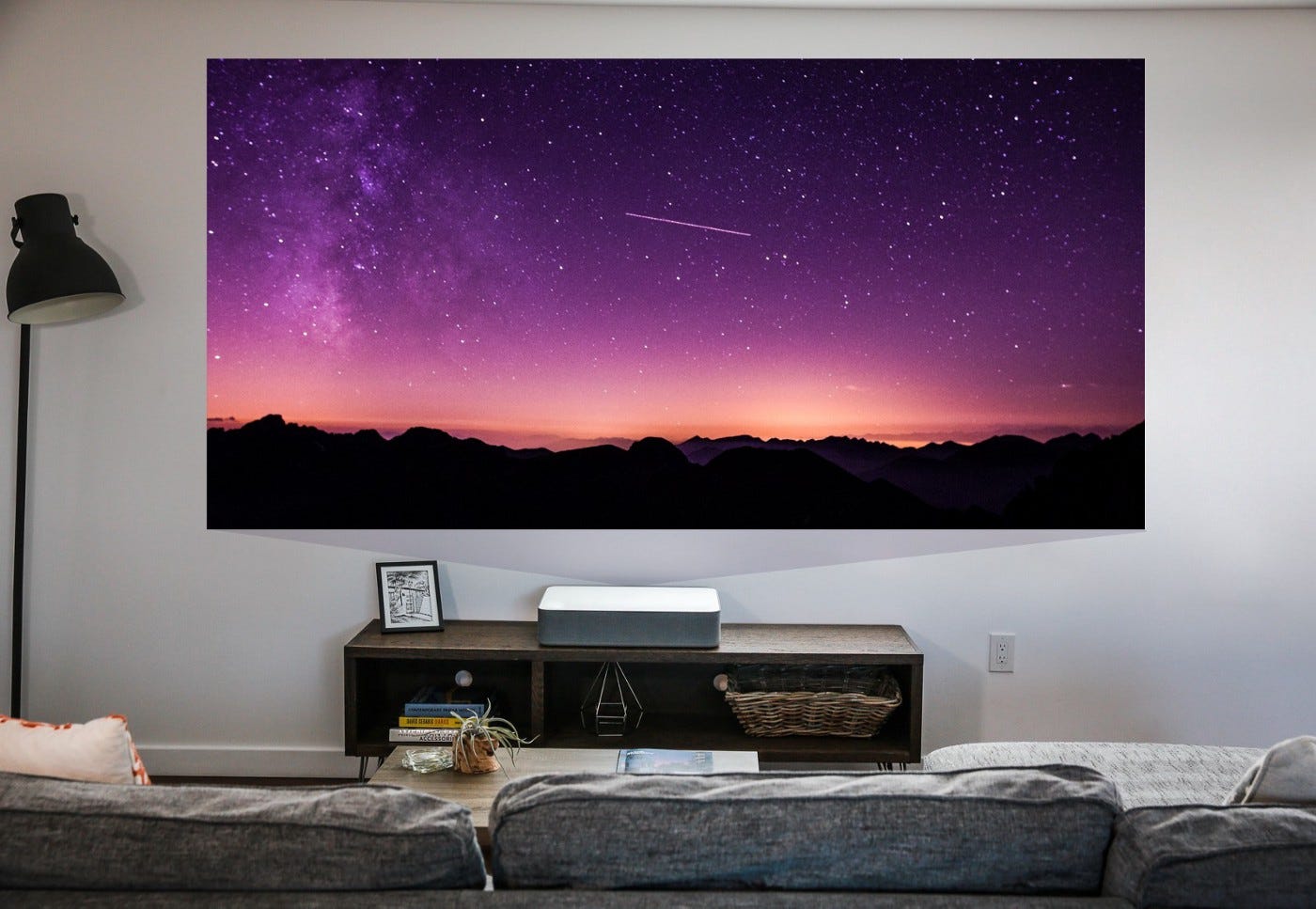
For their angles, we came up with the following that we wanted to test:
1) Turn your home into a private cinema
Bulbs use laser technology which lasts 10 years and is what movie theaters use. At just 8.5” from the screen, it can fill 100” screen. Can max out (with quality) at 150”. That’s over double some of the largest TV screens.
2) Ultra-short throw is the next evolution of projector technology
Ceiling mounted projectors are expensive to install and fall prey to the image being disturbed by any movement. Now you can get amazing imagery at a huge size without installation and with zero chance of disturbing the image because the unit is on the ground and less than a foot away from the screen.
3) Bring the theater with you wherever you go
Ultra-portable. Harman Kardon speakers. It is a completely standalone entertainment product. Has built-in apps like an apple tv, roku, fire stick, etc.
4) The best of both worlds
High quality and affordable. Nothing in this price range to combine with this quality. 4K laser picture at a great price!
—
Step 3: Identify 2–4 audiences you want to test on Facebook
Next you’ll want to create different audiences to target on Facebook/Instagram. Think of an audience as a type of person — what are their interests, their age, their gender, etc.?
Here are a few audiences we came up with for VAVA:
- Projector Competitor Brands — People interested in existing projector brands are an already qualified group
- Bigger retailers that sell projectors, smart TVs, and electronics — This is where we are likely to find our target customer shopping for either our desired product or product-adjacent items
- Media Streaming Devices (Roku, AppleTV, Amazon Firestick) — Consumers of visual content are another demographic that would be interested in a way to display the visual content so people interested in these platforms/items would logically also be interested in an elite way to display said content.
- People that watch home renovation TV shows or are interested in DIY home renovation — Anyone looking to upgrade their current living situation (geared more towards men with this assumption) are interested in having an elite movie/sports viewing den and living room AKA a “Man Cave”. The projector is the ultimate improvement for one of these rooms — bringing the movie theater into your home.
—
Step 4: Test using our Reservation Funnel
Using the angles and the audiences, we’ll next want to program advertisements and send traffic down our Reservation Funnel which can be pictured below:

The ultimate goal of the reservation is get the user to put down a $1 deposit to reserve the product before you launch. Why? Because those that put down $1 to reserve the product before you launch are 30x more likely to buy.
You can learn more about what we call our Reservation Funnel by clicking here.
Below you can see one of the best performing ads and landing pages for the VAVA pre-campaign.
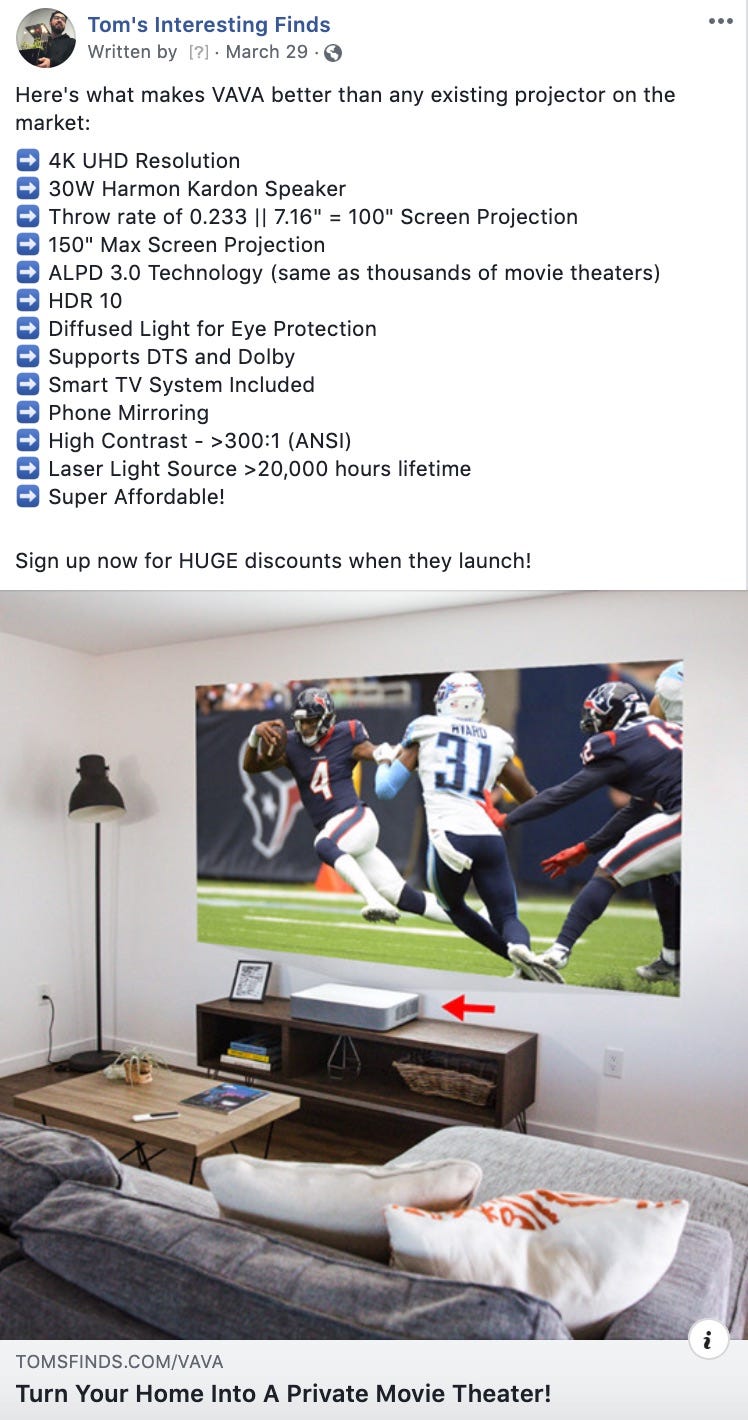
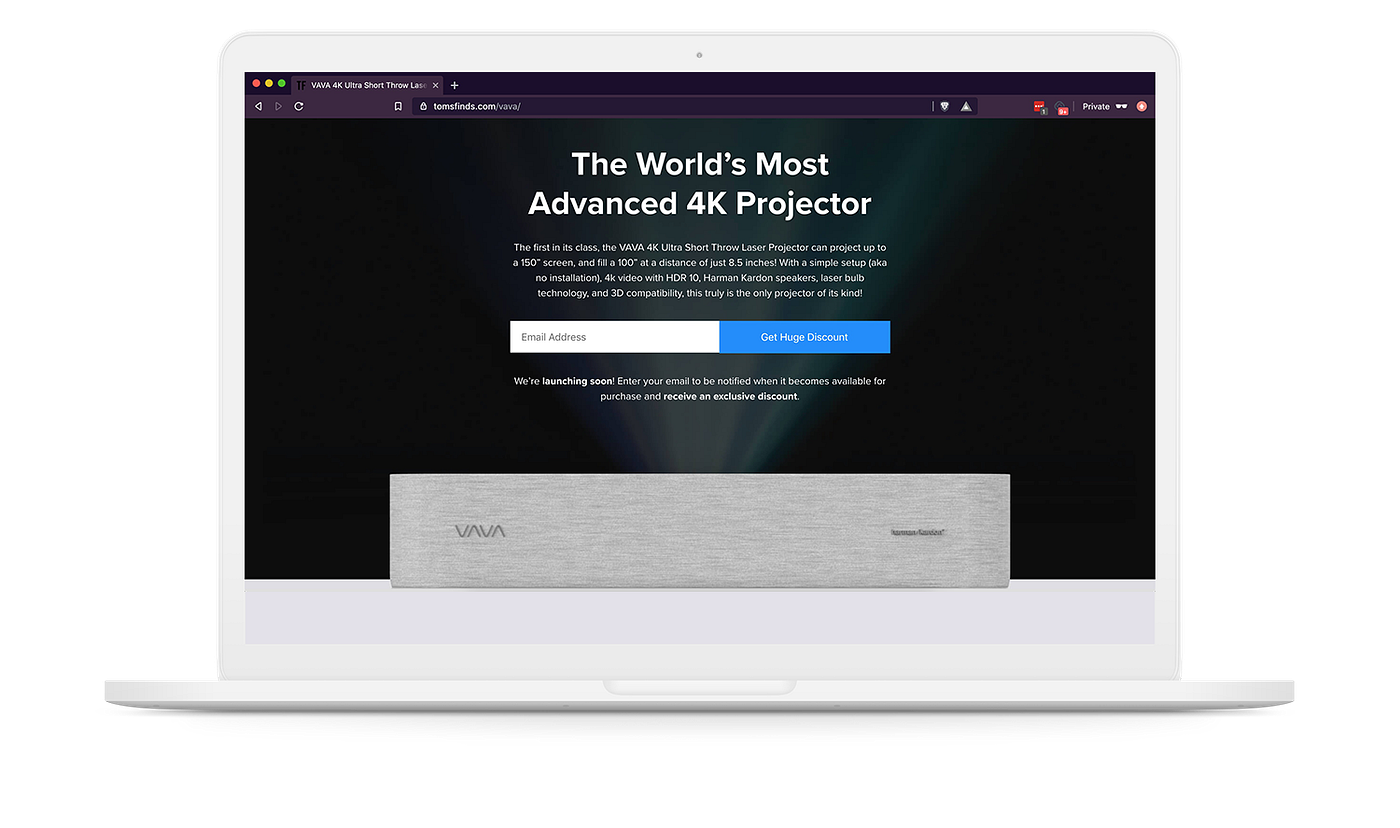
How do we measure the likelihood that it will be a successful campaign?
Over the years of building our TestBoom system, we’ve been refining a predictive model that inputs metrics from the test and outputs the likelihood of success of a campaign. The most important metric by far is the Cost / Reservation as it is the strongest indicator of purchase intent. Other indicators are Cost / Lead and Email Open Rate, but they are not weighted nearly as much as Cost / Reservation.
—
If you are thinking of crowdfunding your new product, I strongly advise testing your positioning in the market before you commit to your launch. If you’d like to discuss our TestBoom process in more detail, don’t hesitate to apply to work with us below.


